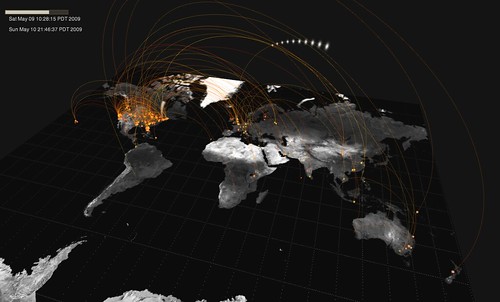Follow example 1




Here was some code i found for a simple following, I like the erratic path of the code but i was not so much a fan of the returning particles from the side. I tired to tweak the code to stay onto the one point but was unsuccessful.
Follow example 2
When mouse moves 'worm' follows
After the mouse is stationary for long enough the worm searches for the mouse in almost random elliptical search patterns
Follow example 3

Cool example of a following line but once you click the line produces irregular movements

example formation fine but can engulf screen
engulfed....
Follow Example 4
Like before cool example of line following. (note: this line connects with the surrounding line to create new path ways)
One cool trait of this code is that you can write into the code words, drawings or symbols. Which for a social gimmick would be quite interesting.



















